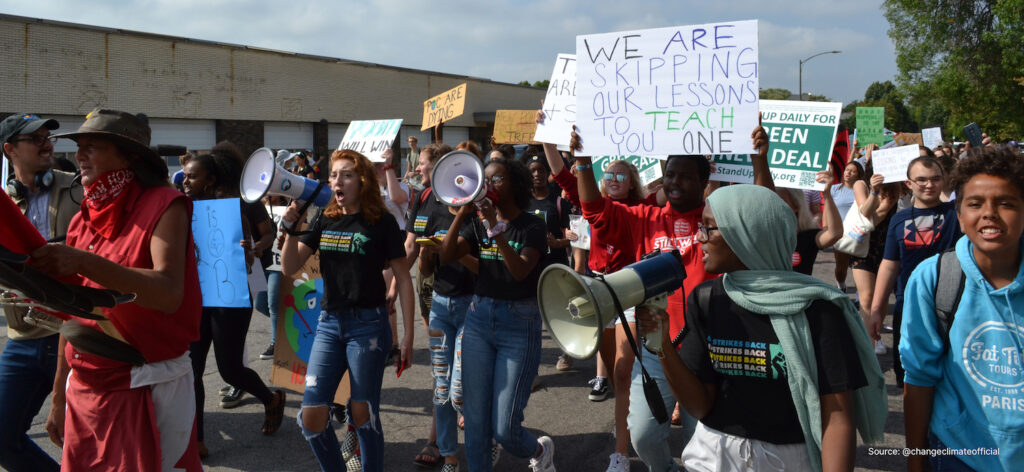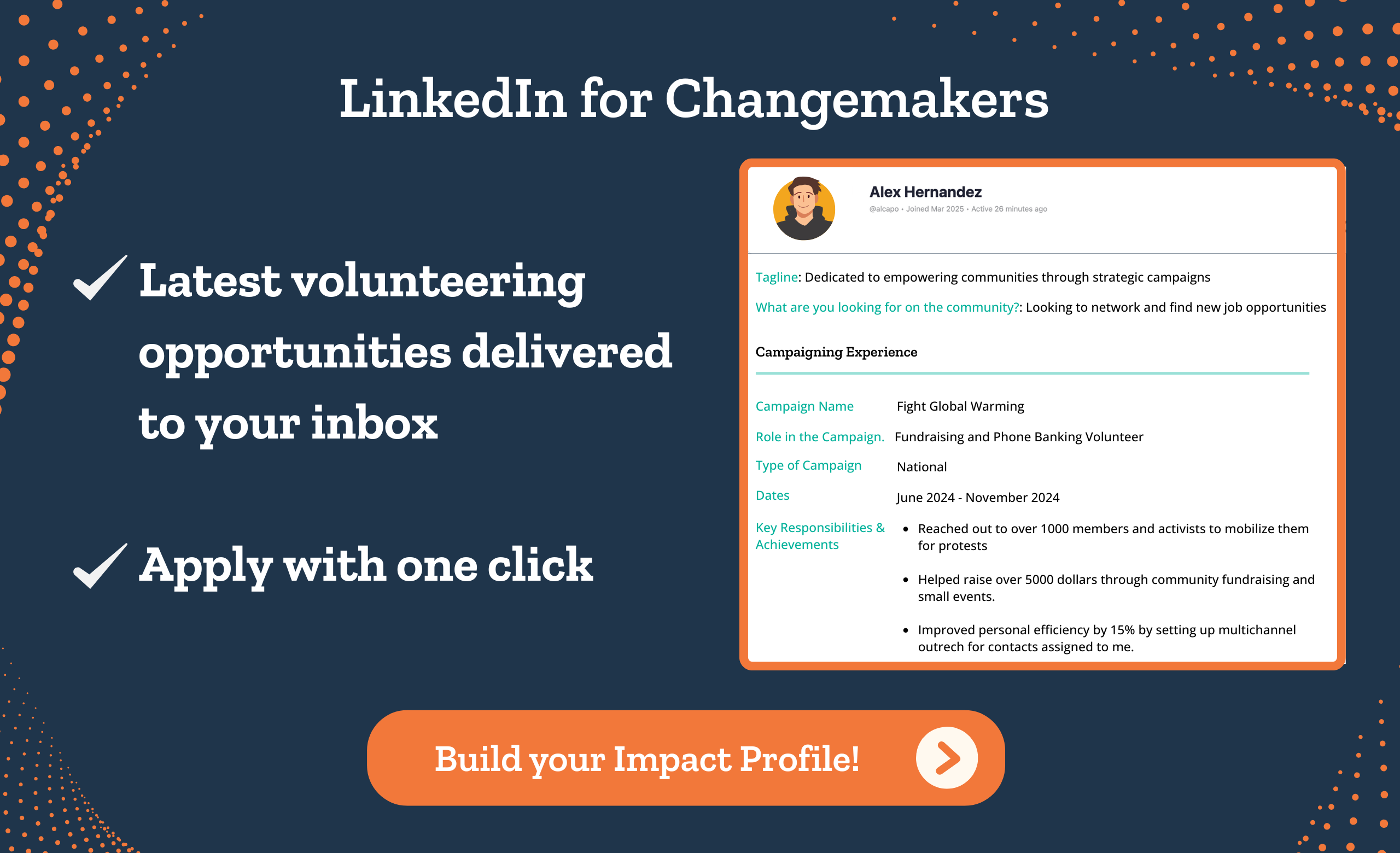Table of Contents
When communities unite, change happens. Community mobilization is that uniting force, a strategic approach that enables groups to solve problems and improve their circumstances. This blog breaks down the concept, details effective mobilization methods, and presents inspiring cases that showcase its power in action, equipping you to lead impactful initiatives.
Key Takeaways
- Community mobilization is a process that empowers a community to improve well-being, become self-sustaining, and take charge of development while fostering shared responsibility and ownership through inclusive and diverse engagement strategies.
- Real-world instances from global contexts such as Brazil’s MST, Nashville’s integration of public schools, and the WHO’s initiatives against adverse childhood experiences illustrate the practical application of community mobilization in addressing a wide range of systemic issues.
- Successful community mobilization faces challenges such as cultural and language barriers, conflicting interests, and sustaining long-term impact. It also requires inclusivity efforts and maintaining momentum by celebrating successes and engagement.
The essence of community mobilization
Community mobilization work is a transformative process that empowers individuals, groups, or organizations to:
- Plan, carry out, and evaluate activities that improve their well-being, either independently or with external support.
- Inspire ‘self-mobilization’ and move towards becoming self-sustaining entities.
- Take charge of their own development and address their most pressing needs.
Indeed, cultivating a sense of shared responsibility among community members is integral to successful community mobilization. This sense of collective ownership propels community members to act unitedly and participate in the process of development, reinforcing the narrative of ‘by the whole community, for the community’. A community coalition can play a crucial role in fostering this sense of shared responsibility.
Engaging community members

Source: How 350 Used Text Messages to Organize the Climate Strike
The process of mobilization is enriched by diverse perspectives and expertise when community members are actively engaged. Promoting open dialogue and encouraging participation from all community segments ensures a broad range of perspectives are considered and valued, reflecting the diversity within the community.
To keep your community members engaged, you must organize:
- Events supporting or advocating against causes that your people care about deeply
- Forums for them to express their opinions
- Fun activities and events where they can bring their friends and family
- Organize meet-and-greets with local leaders
Additionally, you must keep communication open in periods between these events (which will likely happen, say, once a quarter). You can keep the whole community involved by:
- Sending out monthly newsletters
- Sending text broadcasts about events, achievements of members, or other updates
- Engage in two-way conversations with peer-to-peer texting when initiating a campaign or cause
- Send letters to members with messages of gratitude, fundraising appeals, or event invitations
- Check up on them over calls and gauge their engagement levels between major events
- Engage in door-to-door outreach.
Building community participation
The process of building community participation isn’t uniform for all. It requires a participatory approach, fostering a shared vision and active involvement in social initiatives, which in turn promotes a sense of ownership among community members who actively participate.
A diverse range of engagement strategies, including community meetings, focus groups, and online and offline channels, offers multiple avenues to engage community members and allows them to participate and contribute. Respect for local customs and leveraging community leaders can significantly boost participation, making community members feel valued and more likely to engage in the mobilization process.
Involving community members early on is crucial to raise awareness about pressing issues within the community, making them more receptive to collaboration and increasing their engagement in the development of solutions.
Real-world examples of community mobilization
Far from being a theoretical concept, community mobilization is a practical tool employed successfully in various global contexts. Take, for instance, the Brazilian Landless Workers Movement (MST), a grassroots organization that has advocated for land access rights since the 1970s and has achieved international recognition. It is an example of how community mobilization can be used to address systemic issues and bring about significant socio-political change.
Seattle mobilizes marginalized members for an inclusive and equitable future

Seattle’s housing units, as added to their 2035 Comprehensive Plan document.
Closer to home, Seattle’s Office of Planning and Community Development (OPCD) involved the grassroots, marginalized, and non-privileged groups to create “an inclusive and equitable comprehensive plan for the future of Seattle”. While public opinion was always taken when outlining the comprehensive plan, the OPCD realized that it was mostly people with existing power and privilege who were part of this forum. The other part of the public was excluded from the group and hence would continue to suffer after the comprehensive plan was put into action. However, with community mobilization targeting marginalized members, Seattle could rectify this error.
Montana parent mobilizes fellow school parents to create free food bank for children

Representative image. Source: Annie Spratt/Unsplash.
The Great Falls Public School Foundation in Montana mobilized parents to volunteer for “The FoodPantry”—an initiative to improve students who don’t get adequate or the right food at home. These community members stock the school pantry with food they purchase from the local food bank. Any child, without requiring to fill out forms or pay for the food, can “shop” from the pantry every Thursday and take home healthy and nutritious food.
World Health Organization (WHO) initiatives
The World Health Organization (WHO) has harnessed community mobilization to mitigate Adverse Childhood Experiences (ACEs) – negative childhood experiences with potential long-term effects. To mitigate the impact of ACEs, the WHO has implemented steps such as educating the community about the impact of trauma and building resilience, showcasing a health-focused application of community mobilization.
Mercy Corps’ approach to community development
Similarly, the international humanitarian organization Mercy Corps has utilized community mobilization in its community development approach. By focusing on participatory approaches and accountability, they have been able to foster good governance and peaceful change, demonstrating the versatility of community mobilization in different contexts.
Grassroots movements for social change
Grassroots campaigns serve as a powerful testament to the transformative potential of community mobilization. These movements have played a pivotal role in raising awareness and driving social change on a variety of issues, including racial justice and environmental concerns.
Grassroots campaigns for racial justice, for example, implement a variety of strategies such as:
- marches
- vigils
- concerts
- art fairs
to engage communities and foster dialogue. During the European refugee crisis of 2015, civilians self-organized to deliver aid to refugees, showcasing grassroots mobilization in times of humanitarian need.
These movements, through their local initiatives and continent-wide mobilizations, have shown the ability to bring about significant socio-political change, even influencing political leaders.
Overcoming challenges in community mobilization
Despite its benefits, community mobilization also presents several challenges. From adhering to the Do No Harm concept to ensure that actions taken do not inadvertently harm the community to tailoring strategies for urban complexities such as extreme poverty and informal settlements, the path to successful community mobilization is paved with hurdles.
One such challenge is the barrier created by cultural and language differences in community mobilization efforts. Addressing these requires specific strategies such as cultural competence and inclusive communication, ensuring that every member is included and heard regardless of their cultural background or language proficiency.
Navigating conflicting interests
Given the diverse range of stakeholders involved, conflicting interests are often an inevitable outcome of community mobilization efforts. Navigating these conflicts requires skilled facilitators who are versed in mediation techniques and capable of reconciling diverse (or conflicting) interests.
Understanding conflict dynamics is crucial in this regard. It enables facilitators and diverse stakeholders to manage conflicting interests by addressing the root causes of tension while leveraging positive aspects for community benefit. It’s not about eliminating conflict but rather about managing it effectively to ensure it doesn’t derail the mobilization efforts.
Ensuring inclusivity and diversity
Ensuring inclusivity and diversity in community mobilization is a commitment that requires persistent efforts, not just a one-time initiative. It starts with spending sufficient time at each stage of community engagement—preparation, consultation, and reporting—to foster an environment that values each member’s contribution.
Understanding cultural norms and employing patient, creative communication methods are vital in overcoming language and cultural barriers to participation. Forming inclusive social groups and organizing community events, as well as actively exploring different cultures, can lead to increased engagement from minority group members.
Furthermore, ensuring that community members feel safe when providing feedback, especially those who may have previously faced marginalization, is crucial for fostering a culture of inclusivity.
Sustaining momentum and long-term impact
Maintaining momentum and ensuring a long-term impact in community mobilization are arguably among the most formidable challenges. It requires ongoing efforts to nurture commitment on a sustained basis within the community, which grows as members:
- Collaborate
- Share success
- Make collective decisions
- Overcome challenges
- Work actively towards a common goal
Recognizing and appreciating different levels of commitment among individuals is crucial. It inspires them to stay involved and potentially increase their engagement over time. Leaders play a key role in this process, and their dedicated attitudes and actions influence others to emulate their level of engagement.
Creating a community culture of appreciation and respect helps members feel recognized for their contributions, a crucial factor in sustaining long-term commitment. Furthermore, maintaining enthusiasm requires
- Consistent communication about the impact of community efforts,
- Actively welcoming new participants, and
- Adjusting to evolving community needs and feedback.
By doing so, we can foster effective community support.
Celebration of successes and facilitated social interaction can reinforce community bonds and a shared sense of achievement, bolstering long-term enthusiasm for the community’s mission. Finally, acknowledging and rewarding the efforts of individuals and teams motivates effective contributions and is a key element of sustaining resource mobilization and allocation.
Summary
Community mobilization embodies the essence of the adage, “United we stand, divided we fall.” It’s about empowering communities to take charge of their own development, engaging diverse members, and building participation. Through real-world examples, from the Brazilian Landless Workers Movement to the WHO initiatives, we’ve seen the transformative potential of community mobilization. While challenges exist, from navigating conflicting interests to ensuring inclusivity, they are not insurmountable. With the right strategies and a sustained commitment, community mobilization can bring about lasting change. Let’s remember that the strength of the community lies in the strength of its people.
Frequently Asked Questions
What are the three common principles of community mobilization?
In community mobilization, it is important to focus on inclusion, empowerment, and collaboration to achieve the desired impact. These three principles form the foundation for effective community mobilization efforts.
What is an example of mobilizing a community?
An example of mobilizing a community is conducting door-to-door outreach, public meetings, health fairs, and participatory theatre, among other activities. These activities help engage and involve the community in various initiatives.
What do you mean by community mobilization?
Community mobilization involves engaging communities to identify priorities, resources, needs, and solutions to promote participation, governance, accountability, and peaceful change. It also brings stakeholders together to raise awareness and demand for programs, deliver resources and services, and strengthen community participation for sustainability and self-reliance.
How does community mobilization work in real-world scenarios?
Community mobilization works in real-world scenarios through various initiatives, such as the Brazilian Landless Workers Movement advocating for land access rights. Another example is WHO initiatives addressing adverse childhood experiences. Both of these examples demonstrate the impact of community mobilization.
What are some challenges in community mobilization?
Some challenges in community mobilization include navigating conflicting interests, ensuring inclusivity and diversity, and sustaining momentum and long-term impact. These factors require careful consideration and effective strategies to address them.
Feature image source: Erika Giraud/Unsplash.
[We took help of AI to write this blog]

